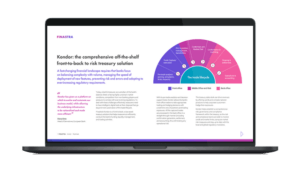Exploring BNB: The Cryptocurrency Powering Binance Ecosystem
BNB, originally known as Binance Coin, is a versatile cryptocurrency that fuels the operations of the Binance exchange and its surrounding ecosystem, offering users reduced trading fees and various utilities.

BNB, the native cryptocurrency of the Binance platform, is more than just a medium of exchange. It plays a pivotal role in facilitating operations within the expansive Binance ecosystem, which includes trading, finance, and other blockchain-related services. This article delves into the functionalities, benefits, and uses of BNB, helping you understand why it has become one of the top cryptocurrencies in the market.
Origins and Evolution of BNB
Launched in 2017 through an initial coin offering (ICO), BNB was initially introduced to support the launch of the Binance exchange. Originally issued as an ERC-20 token on the Ethereum blockchain, BNB has since migrated to its own blockchain, Binance Chain, followed by the introduction of Binance Smart Chain (BSC) to foster decentralized applications (dApps) development.
BNB’s Role in the Binance Ecosystem
BNB serves multiple purposes within the Binance ecosystem. It is used to pay for trading fees on the exchange, where users benefit from a significant reduction in fees when payments are made with BNB. This incentive has helped maintain high demand and utility for BNB among traders. Moreover, BNB is used in various other contexts, such as:
- Transaction Fees: BNB can be used to pay transaction fees on Binance’s decentralized exchange, Binance DEX, and for smart contract executions on Binance Smart Chain.
- Token Sales: Participation in token sales hosted on Binance Launchpad, which often require BNB for purchase.
- Payment and Purchases: Many merchants worldwide accept BNB as a form of payment, enhancing its utility beyond just trading.
Investment and Financial Services
BNB also underpins several investment and financial services within the Binance ecosystem. Binance Earn, a platform offering various cryptocurrency staking and earning options, allows users to stake BNB for rewards. Additionally, Binance’s decentralized finance (DeFi) features, including yield farming and liquidity pools on Binance Smart Chain, rely heavily on BNB.
Governance Capabilities
With the growth of decentralized platforms, governance has become a crucial element. BNB holders can participate in governance decisions on Binance Smart Chain, influencing the development and adjustment of network parameters. This feature empowers users and stakeholders with a direct impact on the blockchain’s future.
BNB Burn Mechanism
One of the unique aspects of BNB is its quarterly burn mechanism. Binance uses a portion of its profits to buy back and burn BNB tokens, reducing the total supply and aiming to increase scarcity and value. This deflationary mechanism is scheduled to continue until 50% of the total BNB supply is burned.
The Future of BNB
As Binance continues to expand its services and solidify its position as a leading cryptocurrency exchange, the future looks promising for BNB. Its integration into various sectors of the Binance ecosystem ensures its continued relevance and demand. Moreover, the ongoing development of Binance Smart Chain and its growing adoption among developers highlight BNB’s potential in powering a new wave of innovative dApps and financial products.
In conclusion, BNB is not just a utility token but a foundational asset within the Binance ecosystem, with diverse uses ranging from trading fee discounts to governance. Its strategic importance to Binance’s operations and its innovative burn mechanism make it an intriguing component of the crypto market, offering potential growth and utility to its holders.









